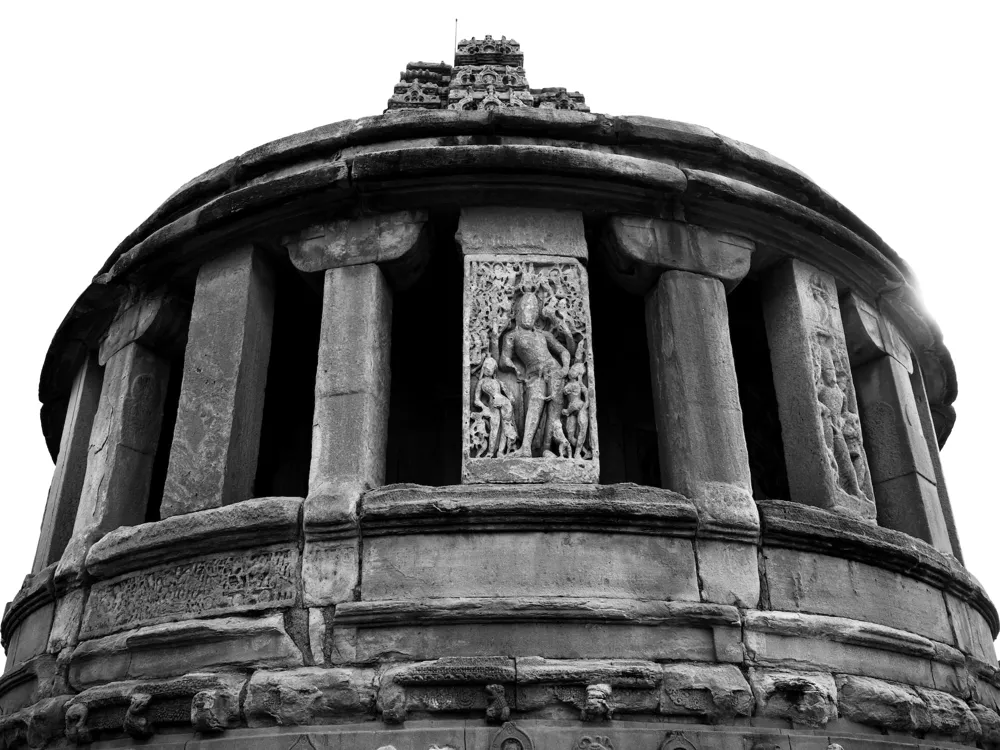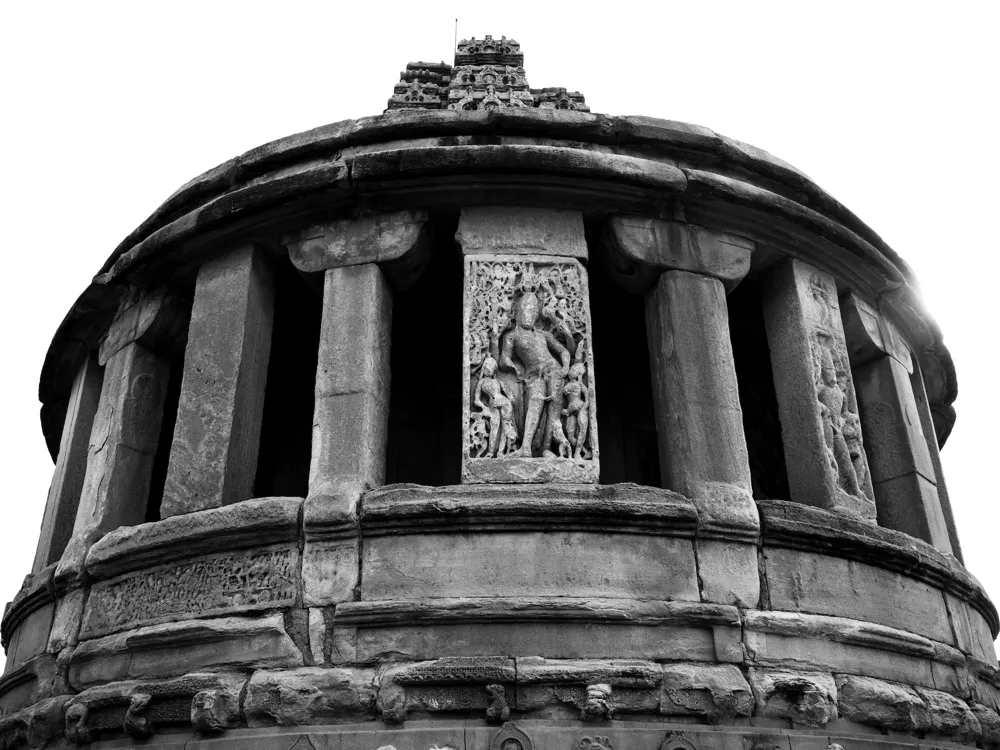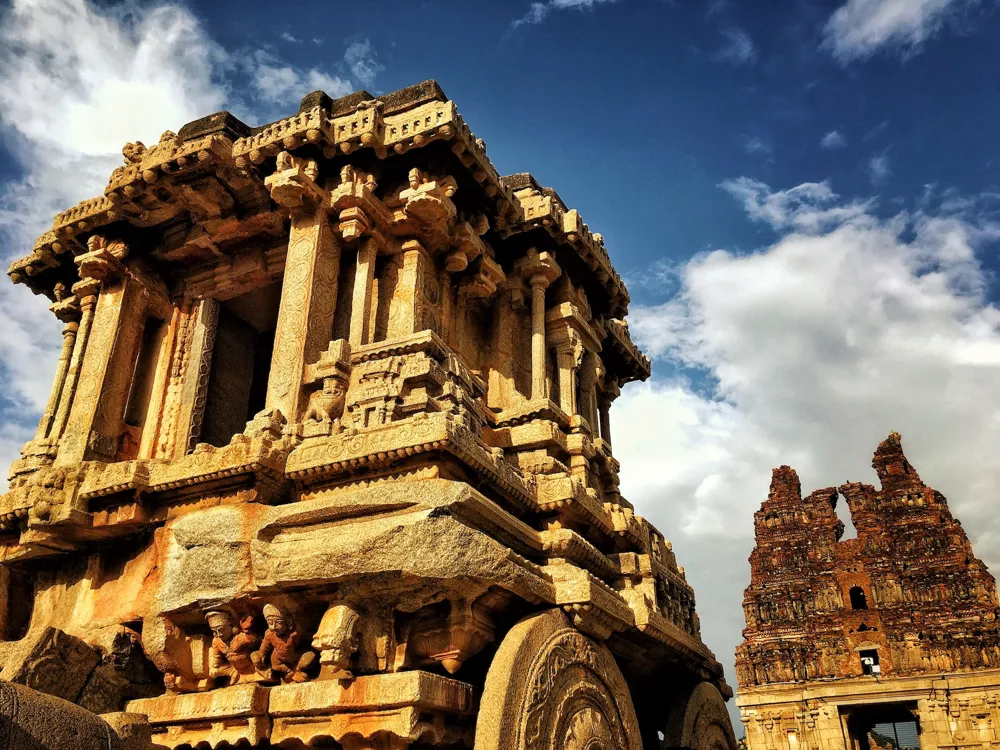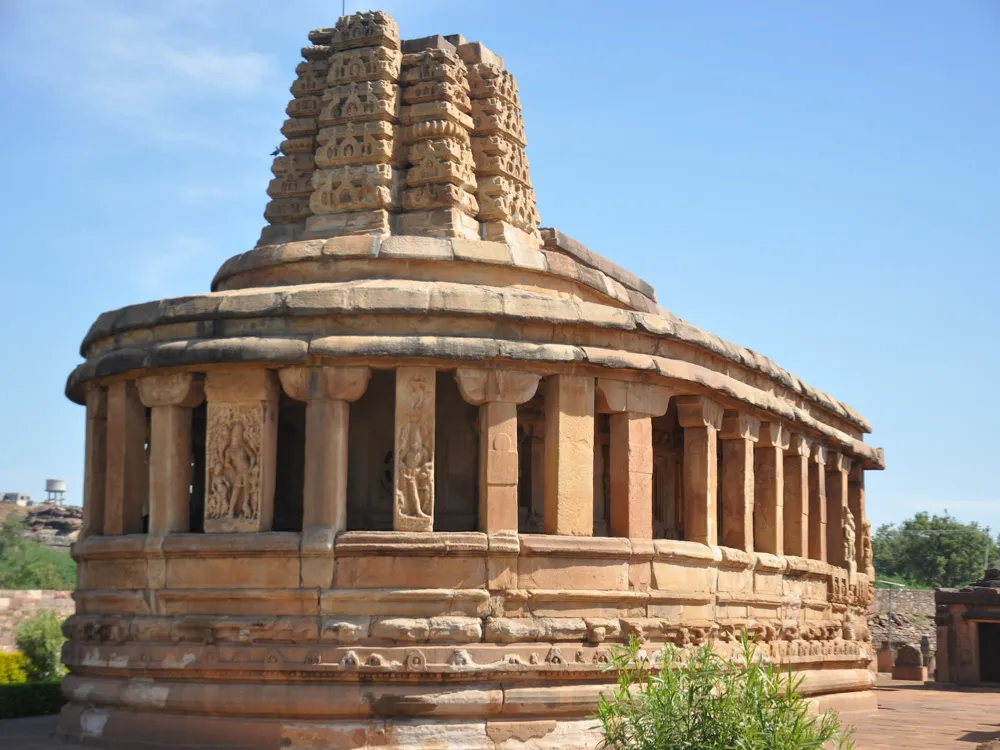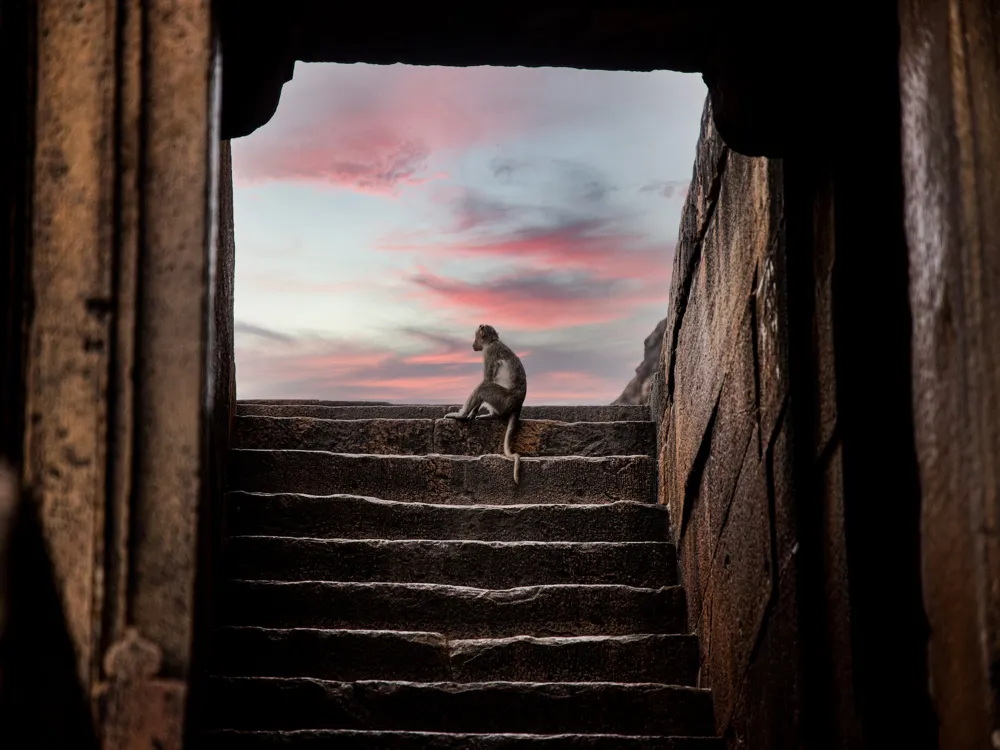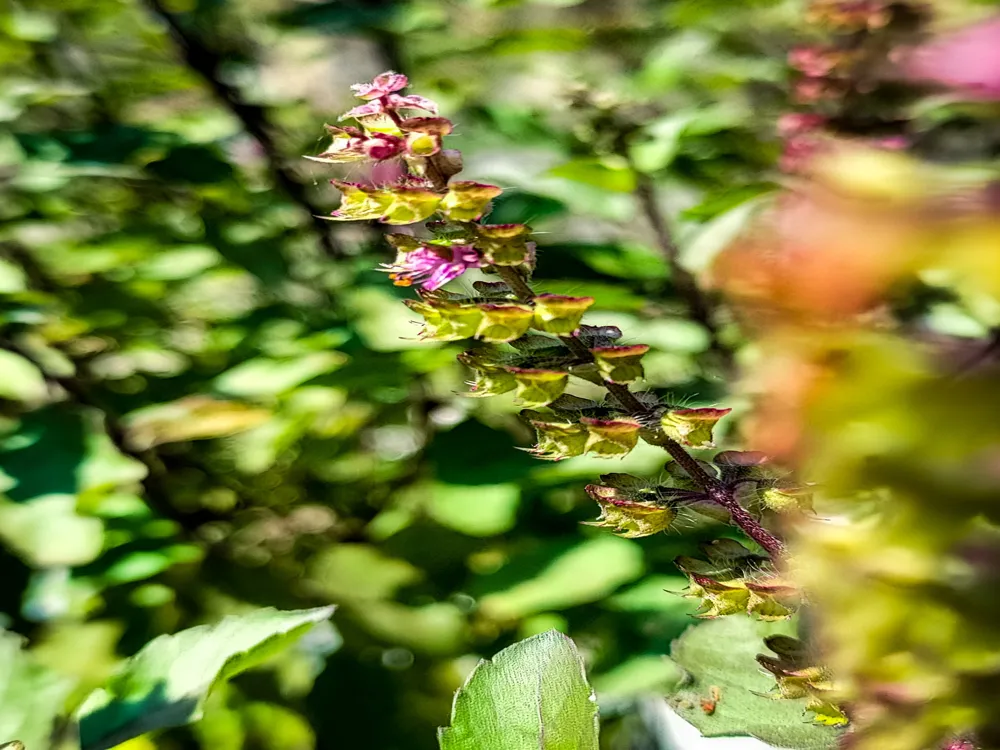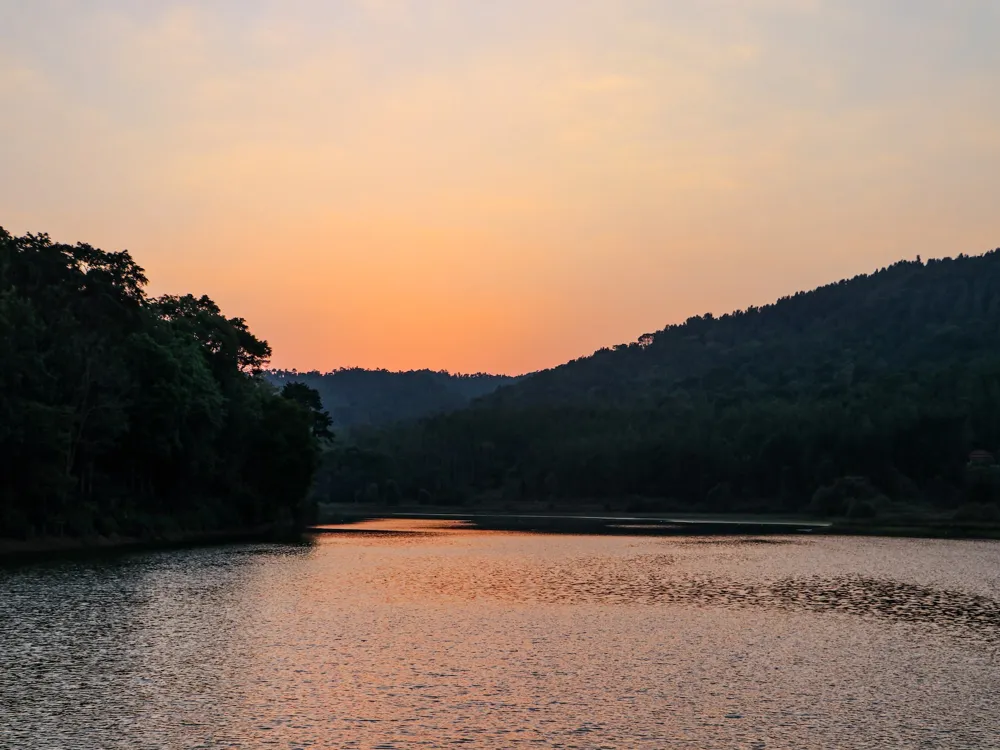Nestled in the historic town of Aihole in Karnataka, India, the Hucchimalli Temple stands as a testament to the architectural brilliance of ancient India. This temple, believed to have been built in the 7th century during the Chalukya dynasty, is a significant relic of India's cultural and religious heritage. The Hucchimalli Temple, also known as the Huchimalligudi, attracts history enthusiasts and pilgrims alike, offering a unique glimpse into the past. Aihole, often referred to as the 'Cradle of Hindu Rock Architecture', houses over 120 temples, with the Hucchimalli Temple being one of the most prominent. This temple is dedicated to Lord Vishnu, one of the principal deities of Hinduism. The temple's location in Aihole makes it a part of a larger, historically significant site, which was once the capital of the Chalukya dynasty. This era is renowned for its contribution to temple architecture, with Aihole playing a pivotal role. The temple's history is as fascinating as its architecture. It was during the reign of the Chalukyas that temple building in India saw a transformation. The Hucchimalli Temple is a fine example of the experimentation and innovation in temple design that occurred during this period. The temple not only served as a place of worship but also as a center for social and cultural gatherings, reflecting the integral role of religion in the daily lives of the people at that time. Today, the Hucchimalli Temple not only stands as a historical structure but also as a symbol of the rich cultural tapestry of India. Its intricate carvings and detailed sculptures tell stories of the past, making it a must-visit for anyone interested in history, architecture, or religion. The temple, though ancient, continues to be a place of worship and is an integral part of the local community's cultural identity. The architecture of Hucchimalli Temple is a remarkable example of early Chalukyan design. The temple showcases a blend of Dravidian and Nagara styles, indicative of the evolutionary phase in Indian temple architecture. The complex features a garbhagriha (sanctum sanctorum), an antarala (vestibule), a sabha mandapa (assembly hall), and a mukha mandapa (entrance hall), each distinct in its architectural elements and significance. The sanctum, housing the main deity, is designed with a square plan, a feature typical of Chalukyan temples. The walls of the temple are adorned with intricate carvings and sculptures depicting various Hindu deities and mythological scenes. These sculptures are not just religious symbols but also exhibit the artistic skills and creativity of the craftsmen of that era. The temple's outer walls are equally impressive, featuring detailed carvings and a series of miniature decorative towers. The temple's vimana (tower) is an example of the nascent stages of the Dravidian style, characterized by its tiered, pyramid-like structure. The fusion of styles in the Hucchimalli Temple is a significant marker of the period's architectural experimentation and innovation. The temple complex also includes subsidiary shrines and a stepped tank, further enhancing its architectural significance. The use of sandstone in construction and the method of joining the stones without mortar are notable features of the temple's architectural design. These elements not only contribute to the temple's aesthetic appeal but also to its durability, allowing it to withstand the test of time. Visitors should be mindful of local customs and traditions while visiting the temple. Dress modestly and remove shoes before entering the temple premises. The ideal time to visit the Hucchimalli Temple is between October and March, when the weather is pleasant. Early mornings or late afternoons are recommended for the best experience. Check for any photography restrictions inside the temple. While exterior photography is usually allowed, interior photography might be restricted. Consider hiring a local guide to gain deeper insights into the temple's history and architecture. Guides are available at the site for a nominal fee. Aihole is well-connected by road and is accessible from major cities in Karnataka. The nearest airport is in Belgaum, about 150 km away. The closest railway station is in Bagalkot, around 34 km from Aihole. Regular bus services and taxis are available from these cities to Aihole. Once in Aihole, Hucchimalli Temple is easily reachable by local transport or on foot, being one of the central attractions of the town. Read More:Overview of Hucchimalli Temple, Aihole, Karnataka
Architecture of Hucchimalli Temple
Tips When Visiting Hucchimalli Temple
Respect Local Customs and Traditions
Best Time to Visit
Photography Guidelines
Local Guides
How to Reach Hucchimalli Temple
Hucchimalli Temple
Aihole
Karnataka
NaN onwards
View aihole Packages
Aihole Travel Packages
View All Packages For Aihole
Top Hotel Collections for Aihole

Private Pool

Luxury Hotels

5-Star Hotels

Pet Friendly
Top Hotels Near Aihole
Other Top Ranking Places In Aihole
View All Places To Visit In aihole
Faq on Aihole
What is Hucchimalli Temple in Aihole?
Hucchimalli Temple is a historic temple located in Aihole, Karnataka, India. It is renowned for its unique architecture and intricate carvings, representing the rich cultural heritage of the region.
When was Hucchimalli Temple built?
Hucchimalli Temple dates back to the 7th or 8th century AD, belonging to the era of the Chalukya dynasty. Its precise construction date is not known, but it stands as a testament to ancient Indian craftsmanship.
What is the significance of Hucchimalli Temple?
Hucchimalli Temple holds significant cultural and religious importance. It is dedicated to Lord Shiva and is believed to have been a place of worship and pilgrimage for devotees for centuries.
What are the architectural features of Hucchimalli Temple?
The temple showcases exquisite Dravidian architectural elements, characterized by intricate carvings, ornate pillars, and elaborate sculptures. Its design reflects the architectural brilliance of the Chalukya dynasty.
Is Hucchimalli Temple open to visitors?
Yes, Hucchimalli Temple is open to visitors and tourists. However, it is advisable to check for any specific visiting hours or entry fees, as these might vary depending on the regulations in place.
View aihole Packages
Aihole Travel Packages
View All Packages For Aihole
Top Hotel Collections for Aihole

Private Pool

Luxury Hotels

5-Star Hotels

Pet Friendly
Top Hotels Near Aihole
Other Top Ranking Places In Aihole
Faq on Aihole
What is Hucchimalli Temple in Aihole?
Hucchimalli Temple is a historic temple located in Aihole, Karnataka, India. It is renowned for its unique architecture and intricate carvings, representing the rich cultural heritage of the region.
When was Hucchimalli Temple built?
Hucchimalli Temple dates back to the 7th or 8th century AD, belonging to the era of the Chalukya dynasty. Its precise construction date is not known, but it stands as a testament to ancient Indian craftsmanship.
What is the significance of Hucchimalli Temple?
Hucchimalli Temple holds significant cultural and religious importance. It is dedicated to Lord Shiva and is believed to have been a place of worship and pilgrimage for devotees for centuries.
What are the architectural features of Hucchimalli Temple?
The temple showcases exquisite Dravidian architectural elements, characterized by intricate carvings, ornate pillars, and elaborate sculptures. Its design reflects the architectural brilliance of the Chalukya dynasty.
Is Hucchimalli Temple open to visitors?
Yes, Hucchimalli Temple is open to visitors and tourists. However, it is advisable to check for any specific visiting hours or entry fees, as these might vary depending on the regulations in place.








